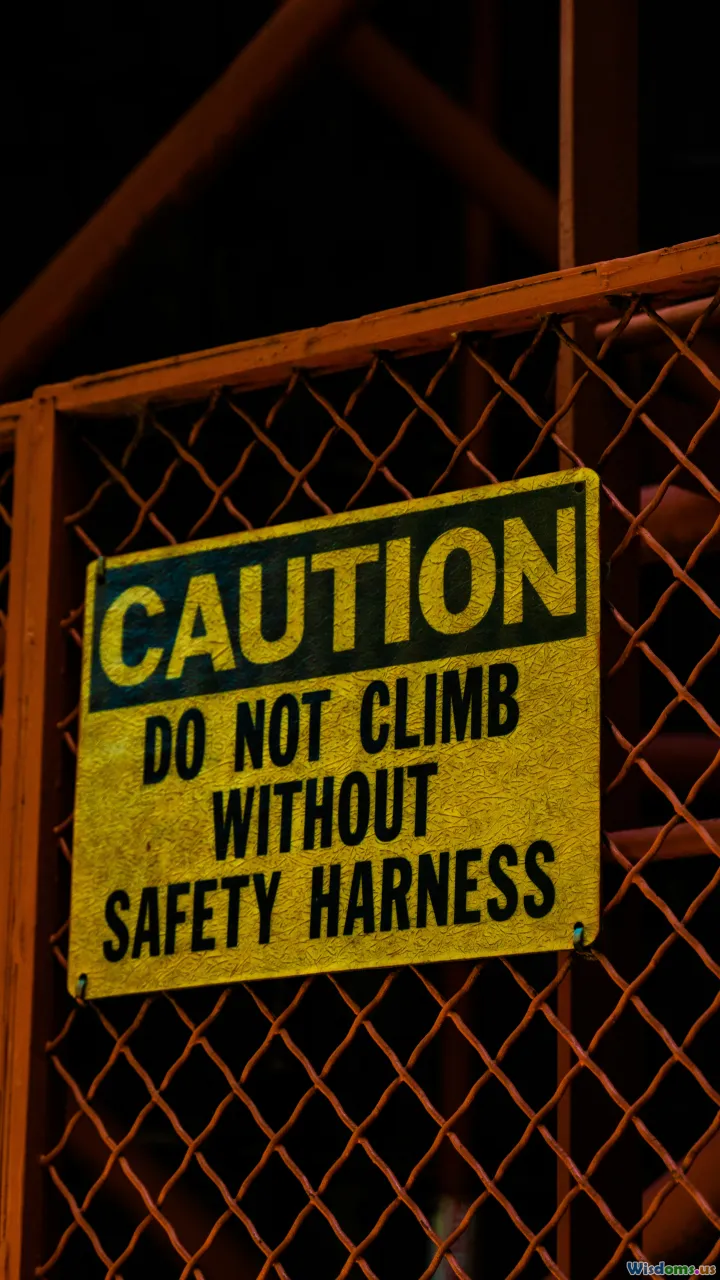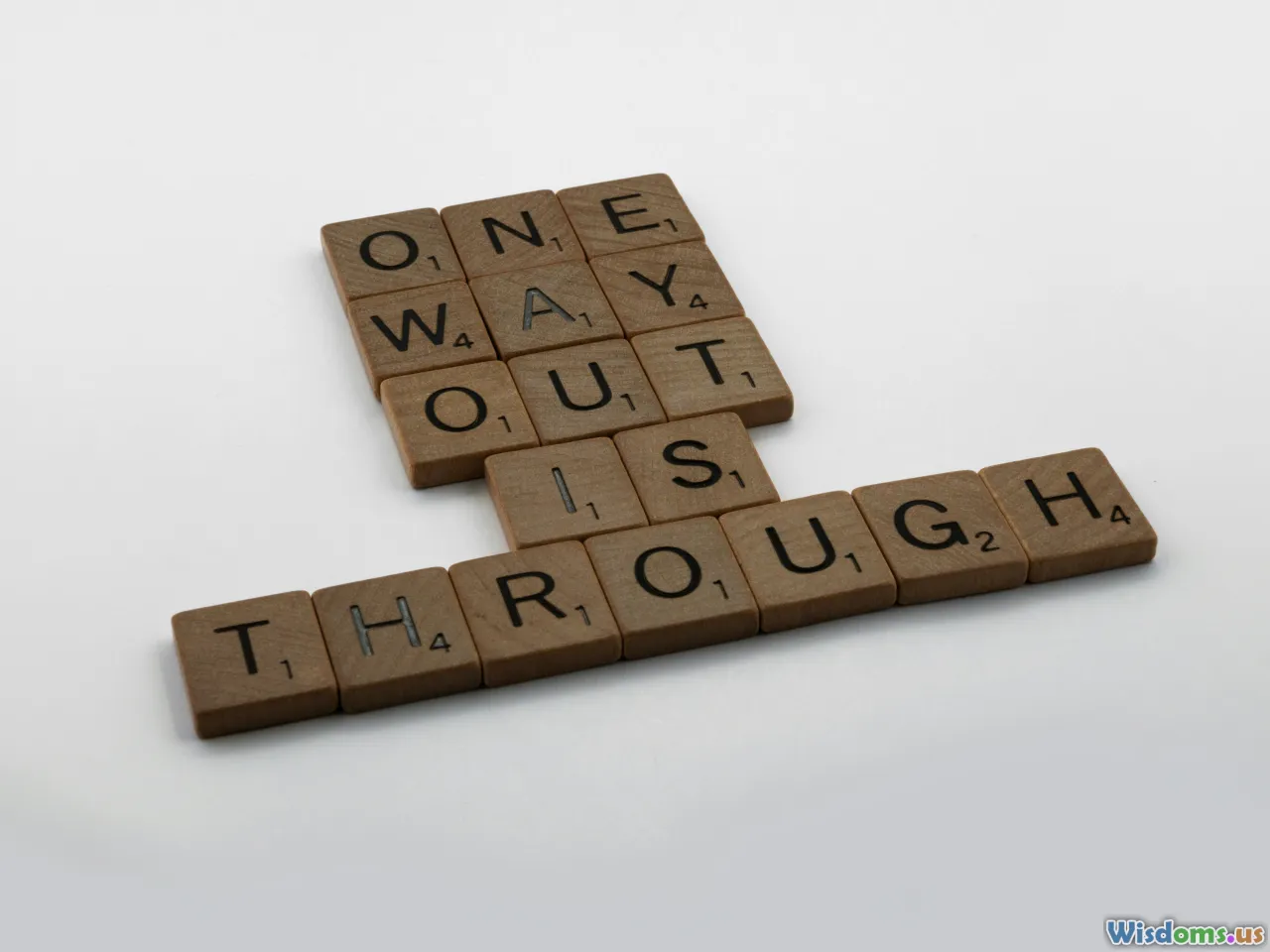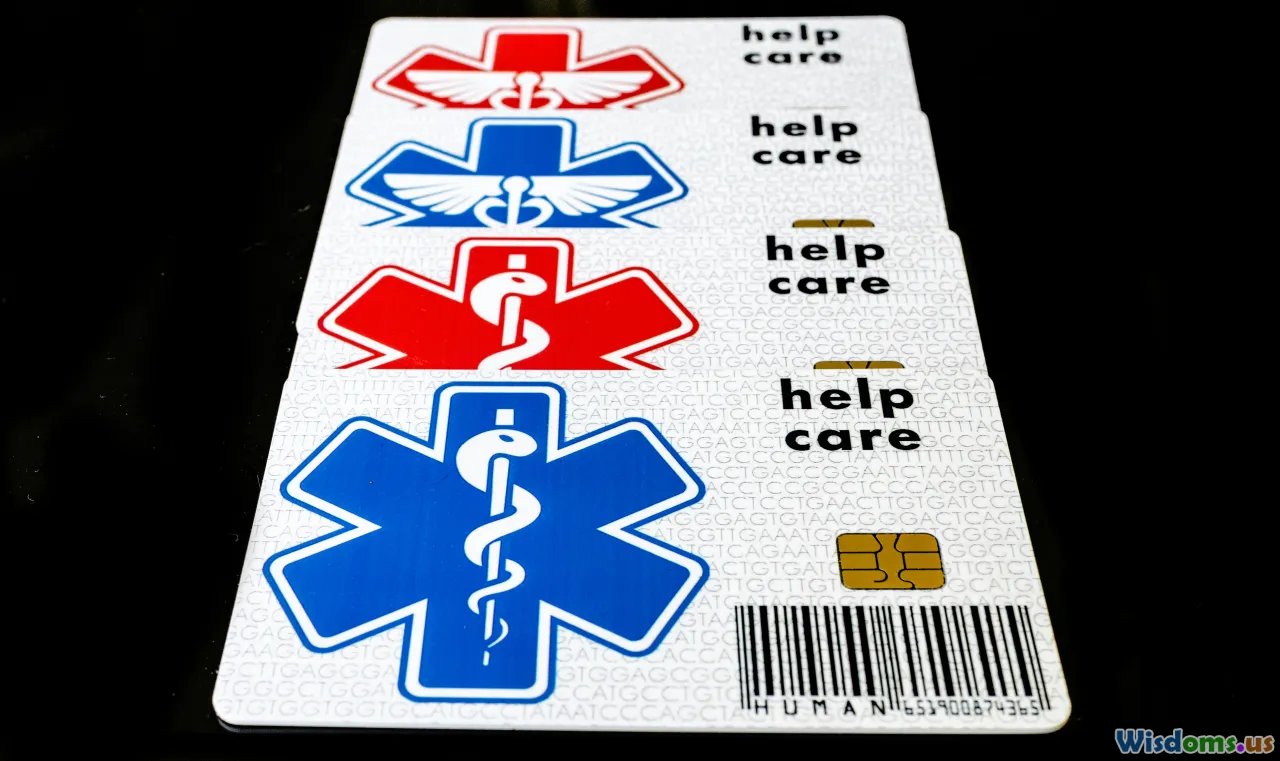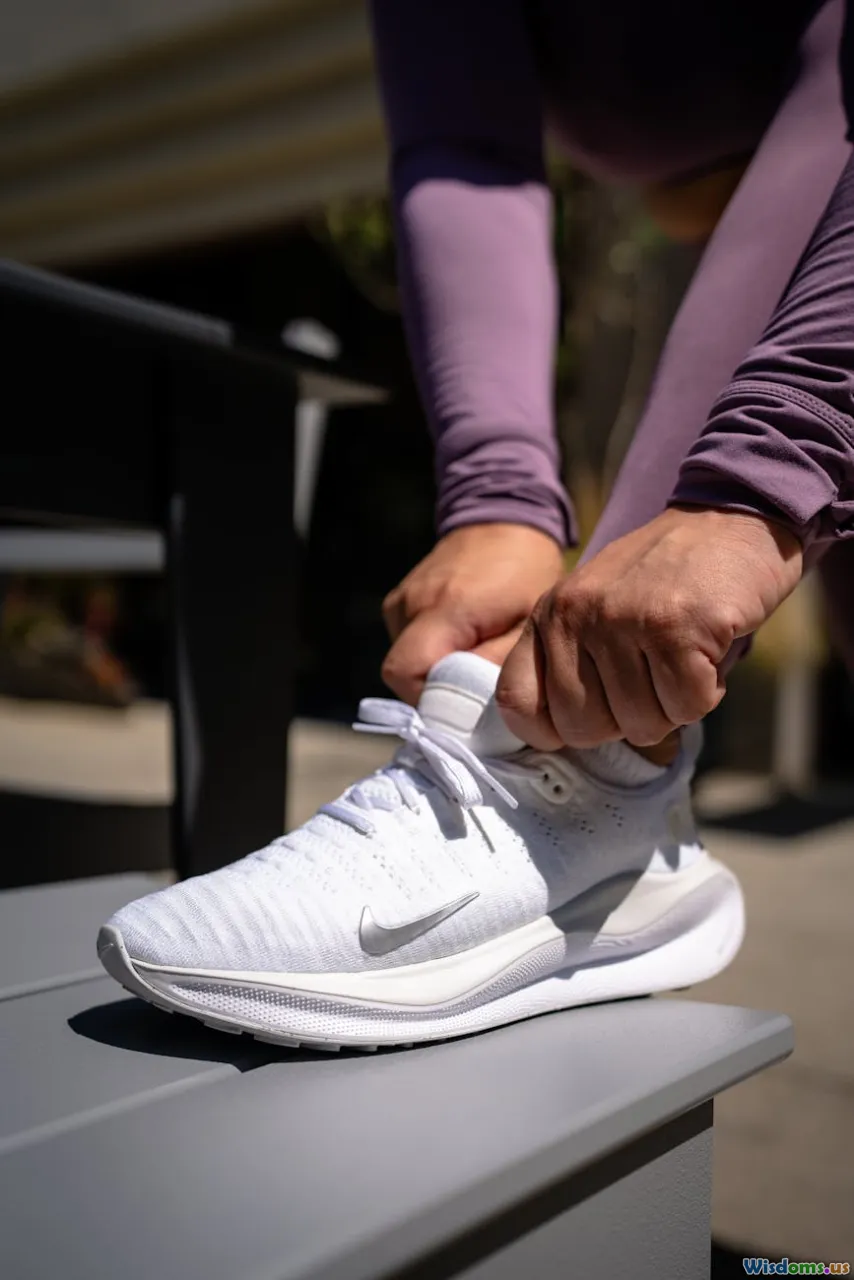
How Spiritual Mentors Can Accelerate Your Personal Healing Journey
29 min read Explore how spiritual mentors provide structure, accountability, and evidence-informed practices to accelerate emotional healing, deepen self-awareness, and sustain growth—plus tips for choosing the right guide and avoiding common pitfalls. (0 Reviews)
You don’t need to walk your healing path alone. Whether you’re navigating grief, burnout, anxiety, or a crisis of meaning, a wise guide can shorten the distance between where you are and where you want to be. Spiritual mentors—elders, chaplains, meditation teachers, seasoned practitioners from diverse traditions—don’t hand you answers. They help you discover your own, offering grounded practices, perspective, and accountability at the moments you’re most likely to lose steam. Think of them as trail guides on a complex landscape: the mountains are still yours to climb, but they help you move with fewer wrong turns, more safety, and a deeper appreciation for the view.
Below, you’ll find a practical blueprint for working with spiritual mentors to accelerate your personal healing journey. You’ll learn how to choose the right mentor, what to expect, how to measure progress, red flags to avoid, and specific tools you can start using immediately.
What Is a Spiritual Mentor—And What Makes Them Different?

A spiritual mentor is a person with lived experience, training, and maturity who supports your inner life and growth. Unlike a therapist, who is clinically trained to diagnose and treat mental health conditions, or a life coach, who focuses on goal attainment and performance, a spiritual mentor helps you develop wisdom, meaning, and practices that knit your inner world together.
Core roles of a spiritual mentor:
- Witness: Holds compassionate space, reflecting back your strengths, patterns, and insights without judgment.
- Teacher: Shares practices such as meditation, prayer, breathwork, contemplation, or ritual.
- Companion: Walks with you during transitions—loss, illness, relationship changes, spiritual deconstruction or reorientation.
- Accountability partner: Encourages consistent practice and aligned action.
Examples of mentors:
- A Zen teacher guiding a weekly meditation and inquiry session.
- A hospice chaplain trained in interfaith care, supporting a caregiver through anticipatory grief.
- An Indigenous elder teaching land-based rituals to reconnect participants with reciprocity and belonging (with explicit consent and cultural protocols).
- A trauma-informed yoga teacher helping students integrate breath, body awareness, and ethical living.
Key distinction: While some spiritual mentors also hold professional licenses, spiritual mentoring itself is not a substitute for medical or psychological care. Many people benefit from mentoring and therapy in parallel.
Why Mentors Accelerate Healing: The Mechanisms That Matter

Speed isn’t the point of healing, but momentum is. Mentors amplify momentum through mechanisms well-documented in research on human flourishing:
- Social buffering: Human nervous systems co-regulate. Safe, attuned relationships reduce stress responses and support emotional regulation. A mentor’s calm presence can help downshift your nervous system during difficult work.
- Meaning-making: Suffering without meaning feels unbearable. Mentors help you translate pain into purpose, connecting your experiences to larger narratives—service, growth, compassion, ancestry, or faith. Meaning reduces helplessness and increases persistence.
- Ritual and repetition: Ritual structures attention and behavior. Whether it’s a morning practice, weekly reflection, or seasonal rite of release, rituals establish rhythms that make healing feel held, not haphazard.
- Accountability: It’s easier to meditate, journal, or practice when someone who believes in you is going to ask how it went. Regular check-ins transform good intentions into embodied routines.
- Compassion training: Many traditions train explicit compassion (toward self, others, and the world). Compassion practices are shown to reduce self-criticism and increase resilience, which supports recovery from setback.
A simple example: You’re working through grief after a breakup. Alone, you might ruminate or oscillate between numbing and emotional flooding. With a mentor, you set a weekly ritual—lighting a candle, reading a poem, meditating for 10 minutes, and writing a compassionate letter to yourself. Over time, grief becomes something you meet rather than avoid, and your nervous system learns that feeling deeply is survivable.
How to Choose the Right Spiritual Mentor

Finding the right fit matters more than finding a famous name. Use these criteria:
- Approach: Do they work within a tradition (Buddhist, Christian, Sufi, Indigenous, secular contemplative) that resonates with your values? If you’re interspiritual, do they welcome that?
- Training and lineage: What training, lineage, or certification do they hold? For elders whose traditions don’t formalize certificates, ask about who mentored them.
- Ethics and boundaries: Do they have clear policies on confidentiality, scope of practice, sliding scale or fees, scheduling, and boundaries around touch and dual relationships?
- Trauma awareness: Are they trauma-informed—able to titrate practices and respond to overwhelm without pushing you beyond your window of tolerance?
- Cultural humility: Do they respect cultural protocols, avoid appropriation, and acknowledge sources of their teachings?
- Chemistry: After an initial conversation, do you feel seen, respected, and grounded—neither idealized nor dismissed?
Questions to ask in a discovery call:
- “What does a typical session look like?”
- “How do you tailor practices to different nervous system needs or faith backgrounds?”
- “What’s your policy if I feel distressed or triggered between sessions?”
- “How do we measure progress together?”
- “What are your red lines—things you don’t do or won’t claim?”
Green flags:
- They encourage you to verify insights in your own experience.
- They refer out to therapy or medical care when appropriate.
- They welcome questions and set expectations clearly.
Red flags:
- Grandiosity, claims of infallibility, or pressure to adopt beliefs.
- Lack of transparency about money, power, or sexual boundaries.
- Discouraging critical thinking or contact with friends/family.
A 90-Day Mentorship Blueprint You Can Start Today

Treat your first three months as an experiment. Aim for weekly or biweekly sessions and daily micro-practices.
Weeks 1–2: Orientation and safety
- Clarify intentions: Choose up to three outcomes (e.g., “sleep better,” “reduce panic spirals,” “reconnect with purpose”).
- Map your resources: People, places, practices, and routines that soothe or energize you.
- Establish safety rituals: Grounding breath, a calming object, a check-in phrase (“Right now is enough.”).
- Agree on communication: Preferred methods for urgent support (and what qualifies as urgent).
Weeks 3–4: Build your base practice
- Choose one core practice (10–15 minutes daily): e.g., breath-count meditation, centering prayer, loving-kindness, body scan.
- Add a micro habit: 60-second gratitude pause at lunch; three deep breaths before email; a nightly “wins and learnings” note.
- Begin a tracking log (paper or app) to capture sleep, mood, practice minutes, and triggers.
Weeks 5–8: Depth and personalization
- Layer a second modality 2–3 times per week: gentle yoga, nature walks, journaling prompts, chanting, or lectio divina.
- Story work: With your mentor, identify a dominant life story (“I must fix everything” or “I’m always abandoned”) and craft a compassionate counter-narrative.
- Boundary tuning: Define one boundary to protect your healing time (e.g., phone off after 9 p.m., “no” to one nonessential obligation per week).
Weeks 9–12: Integration and momentum
- Meaning in motion: Translate insight into action—volunteer, reconcile a relationship, create art, or plan a simple pilgrimage.
- Review data: With your mentor, examine your practice log. Where did you keep promises? Where did you struggle? What helped?
- Futureproof: Decide which practices become non-negotiables for the next season. Schedule them. Set a check-in three months out.
Weekly session skeleton (50–60 minutes):
- 5 minutes: Arrive—breath and grounding.
- 15 minutes: Review—highs, lows, practice adherence, notable triggers.
- 20 minutes: Explore—guided inquiry, story reframing, or ritual relevant to current themes.
- 15 minutes: Plan—refine practices, define one realistic action step, confirm accountability.
- 5 minutes: Close—gratitude, blessing, or intention.
Practical Tools Mentors Use (And How to Try Them)

- Breathwork basics: Box breathing (4-4-4-4) to reset; extended exhales (in 4, out 8) to downshift anxiety; coherent breathing (~5–6 breaths per minute) to stabilize.
- Compassion phrases: “May I be safe. May I be kind to myself. May I meet this moment with courage.” Rotate phrases that resonate; speak them softly during distress.
- Grounding with the senses: 5-4-3-2-1 technique: name five things you see, four you feel, three you hear, two you smell, one you taste. This interrupts spirals.
- Micro-rituals: Light a candle before journaling. Touch the ground or a tree before tough conversations. A simple bow to the day’s teachings before sleep.
- Inquiry prompts: “What am I believing right now?” “Whose voice is this?” “What boundary would protect the most tender part of me today?”
- Values alignment: Rank top five values (e.g., truth, care, creativity, presence, justice). Each week, choose one action that enacts a value.
- Somatic check-ins: Place a hand on heart and belly; ask, “What sensation dominates? What does it need—warmth, movement, stillness?”
- Media hygiene: 24-hour news fast once a week; curate inputs consistent with healing; track mood shifts after media breaks.
Try it today: Pick one 10-minute anchor practice (e.g., breath-count to 10 cycles) and one 60-second micro-ritual (e.g., gratitude pause). Track both for seven days.
What the Research Suggests—Without the Jargon

While spiritual mentoring isn’t a clinical intervention, it leverages elements supported by evidence:
- Social connection improves mental and physical wellbeing. Strong relational support is linked with better stress responses, immune function, and life satisfaction.
- Therapeutic alliance—the quality of the helping relationship—is a robust predictor of positive outcomes across modalities. Mentors invest explicitly in trust and collaboration.
- Contemplative practices like meditation, prayer, and compassion training are associated with reduced rumination and improved emotional regulation for many people.
- Rituals enhance meaning and predictability. Even simple, secular rituals can reduce anxiety and increase a sense of control by organizing experience.
Translation: A mentor helps you consistently do the things that science already says are good for you—and makes those practices more personally meaningful.
Mentor, Therapist, Coach: Which Do You Need When?

- Therapist: Best for diagnosing and treating mental health conditions, processing trauma with clinical tools (e.g., EMDR, CBT), or when symptoms significantly impair daily functioning.
- Coach: Best for performance, career transitions, productivity, or targeted goals (e.g., launching a business, improving communication).
- Spiritual mentor: Best for questions of meaning, belonging, ethical living, grief rituals, prayer or meditation guidance, and integrating values into everyday life.
Overlap helps: Many people blend a therapist for trauma processing, a mentor for meaning and practices, and a coach for career actions. If in doubt, ask your mentor for a referral network—ethical mentors collaborate.
Ethics, Boundaries, and Red Flags You Shouldn’t Ignore

Clear ethics protect you and the mentor:
- Consent and autonomy: You can say no. You can leave. You can disagree.
- Scope: Mentors don’t diagnose illnesses or prescribe medications. They refer to qualified professionals when needed.
- Money transparency: Fees, sliding scales, cancellations, and refunds are clear. No surprises.
- Power dynamics: Mentors acknowledge inherent power differences and work to prevent dependency; they encourage diverse support systems.
- Touch and privacy: Touch only with explicit, revocable consent; confidentiality is honored with understood limits (e.g., safety concerns).
Red flags to exit immediately:
- Pressure to isolate from your support network.
- Sexual advances or covert boundary testing.
- Absolutist claims (“Only my path works”) or secretive practices you cannot opt out of.
- Financial coercion, hidden fees, or “pay to advance” spiritual hierarchies.
Cultural Respect and Interfaith Sensitivity

Spiritual work intersects with culture. Responsible mentoring includes:
- Credit and lineage: Naming the sources of practices, teachers, and traditions.
- Protocols: Learning and honoring permissions, especially around Indigenous ceremonies or closed practices not meant for general use.
- Translation with care: Adapting practices to new contexts without stripping meaning or misrepresenting origins.
- Interfaith literacy: Welcoming different belief systems and nonbelief; avoiding proselytizing; meeting you where you are.
If you’re seeking to learn from a tradition you weren’t raised in, look for mentors endorsed by that community—this reflects accountability to the people whose wisdom you’re receiving.
Digital Mentorship: Making It Work Online

Online mentoring can be effective when done thoughtfully.
Best practices:
- Tech setup: Use reliable platforms with end-to-end encryption when possible. Headphones and a private space matter.
- Structure: Asynchronous check-ins (voice notes, journal snippets) between sessions keep momentum. Many mentors offer a weekly prompt and a 24–48-hour window for a short response.
- Presence: Begin and end digital sessions with rituals—lighting a candle, two minutes of silence—to counter screen fatigue.
- Boundaries: Clarify response hours; avoid 24/7 access models that foster dependency or burnout.
Tools to try:
- Shared documents or apps for practice tracking.
- Calendar blocks and reminders tied to rituals.
- Voice memo reflections when writing feels heavy.
Measuring Progress Without Reducing Your Soul to a Spreadsheet

Quantify what helps, qualify what matters.
Simple weekly dashboard (0–10 scales work well):
- Mood stability
- Sleep quality
- Practice consistency (days practiced)
- Sense of meaning/purpose
- Social connection (quality, not just quantity)
- Energy/fatigue levels
Qualitative check-ins:
- What felt most alive this week?
- Where did I abandon myself? Where did I keep faith with myself?
- Which practice felt nourishing; which felt performative?
Example of a two-minute daily entry:
- Date/Time
- Practices completed: 10-min breath, gratitude note
- Notable trigger: Tense email from manager
- Body signals: Tight jaw, shallow breath
- Response: 5-4-3-2-1 grounding; texted a friend
- Tiny learning: I can pause before replying
Over a quarter, you’ll likely see patterns: certain rituals correlate with better sleep; certain media habits correlate with anxiety. Share these patterns with your mentor to refine your plan.
Case Snapshots: How Mentoring Looks in Real Life

- Maya, 29, creative burnout: She met biweekly with an interspiritual mentor. They built a 15-minute morning ritual (breath, free-write, reading a poem). They added a boundary—no devices until the poem. After six weeks, Maya reported fewer panic episodes and completed a small art series she’d been avoiding for months.
- Luis, 55, grief after his brother’s death: A hospital chaplain helped him craft a weekly remembrance ritual—cooking his brother’s favorite meal and sharing a story with family. The mentor introduced loving-kindness phrases for moments of anger. Luis said the ritual shifted his grief from isolation to connection.
- Aisha, 41, spiritual deconstruction: With a mentor outside her former tradition, Aisha explored values and crafted new rituals anchored in nature. She kept therapy for trauma processing but used mentoring for meaning-making. After three months, she felt less fear about “getting it wrong” and more freedom to live her ethics.
These are composites that reflect common trajectories: compassionate structure, tailored practices, and steady accountability.
Tailoring Mentorship to Specific Healing Goals

- Grief and loss: Slow, rhythmic practices; ritualized remembrance; community support; permission to feel waves without self-blame.
- Chronic illness: Energy-aware practices (yoga nidra, breath pacing); micro-rituals; advocacy coaching; tracking flares and identifying gentle buffers.
- Anxiety and panic: Nervous system education; breathwork emphasizing longer exhales; grounding; limiting caffeine and news; compassionate exposure to feared situations.
- Burnout and moral injury: Reconnection to values; sabbath practices; boundary rebuilding; nature-based resets; meaning through service aligned with capacity.
- Relationship healing: Attachment-aware practices; communication scripts; forgiveness work that does not bypass accountability; body-based grounding during conflict.
Your mentor helps you pick one or two levers at a time, then builds slowly. Healing accelerates not from intensity but from consistency.
Build Your Circle: Mentors, Peers, and Community

A mentor is a hub, not the whole wheel.
- Peer groups: Add a monthly circle for shared meditation, reading, or check-ins. Group resonance multiplies motivation.
- Elders: Invite multi-generational wisdom—different life stages bring different lenses on resilience and love.
- Service: Volunteer or join mutual aid. Service transforms inward work into outward compassion, reinforcing meaning.
- Nature: Many traditions see land as teacher. Schedule regular time outside; practice noticing seasons as metaphors for your inner life.
Your mentor can help you map this ecosystem and prevent over-reliance on any single relationship.
Cost, Access, and Creative Alternatives

If 1:1 mentorship feels out of reach, try:
- Sliding scales and scholarships: Many mentors offer them—ask respectfully.
- Group programs: Lower cost, more community.
- Time banks and skills swaps: Offer your graphic design or childcare hours for mentoring.
- Community clergy and chaplains: Often provide support at low or no cost, regardless of affiliation.
- Books and recorded teachings: Pair a book with a weekly peer call to discuss practices and hold each other accountable.
Budgeting tip: Treat mentoring like a gym membership for your soul—allocate a predictable monthly amount, and invest where you consistently show up.
Scripts and Templates You Can Use

Initial outreach email:
Subject: Exploring Spiritual Mentorship
Hello [Name],
I’m seeking guidance on [brief goal—e.g., building a gentle meditation practice during grief]. I’m drawn to your approach because [reason—e.g., interfaith openness, trauma-informed lens]. Would you be available for a 20–30 minute discovery call to discuss fit, structure, ethics, and fees?
Thank you for your time and the care you offer.
Warmly, [Your Name]
Session agenda you can propose:
- Arrive with 2 minutes of silence
- Review practice log and insights
- Explore one theme (e.g., boundary setting at work)
- Agree on a 7-day plan (10-minute anchor, 1 micro-ritual)
- Close with gratitude
Boundary statement (to yourself and mentor):
- “I commit to one core practice daily. If I miss a day, I resume without self-judgment.”
- “I’ll reach out if I experience acute distress; otherwise, I’ll bring questions to our weekly session.”
Common Myths That Slow People Down

- “Mentors tell you what to believe.” Good mentors help you test beliefs in your own experience; they don’t impose doctrine.
- “Healing must be solo to be authentic.” Independence is valuable, but interdependence is how humans heal. Relationship is a medicine.
- “If I need help, I’m failing.” Seeking support is intelligent stewardship of your growth.
- “Once I start, I can’t stop.” You can pause mentoring at any time. Healthy mentors won’t guilt you.
- “Only religious people have spiritual mentors.” Many mentors work with secular or interspiritual frameworks focused on values, meaning, and presence.
When Mentoring Feels Stuck—How to Get Unstuck

Plateaus happen. Try this with your mentor:
- Change the dose: Halve practice time but double consistency.
- Change the channel: If seated meditation stalls, try walking prayer, chanting, or contemplative art.
- Name the resistance: Journal a dialogue with your resistance (“What are you protecting?”). Honor its purpose, then negotiate a manageable step.
- Revisit intention: Are your goals still alive? If not, refresh them.
- Add or refer: Bring in a therapist for trauma work; join a group for community energy.
A Gentle Word on Safety and Scope

If you’re experiencing intense, persistent symptoms—suicidal thoughts, self-harm, inability to function at work or home—contact local emergency services or a licensed mental health professional. Spiritual mentoring complements, but does not replace, medical or psychological care.
Your Next Step—Make It Small and Real

Pick one thing from this guide and try it for seven days:
- One 10-minute anchor practice each morning.
- One 60-second micro-ritual at a predictable cue (after brushing teeth, before opening your laptop).
- One message to a potential mentor, using the outreach script.
- One boundary that protects your rest.
Then, notice: What changes—inside your body, in your schedule, in your relationships? Share what you learn with someone you trust. If that someone is a skilled spiritual mentor, you may find the path ahead becomes clearer, steadier, and a little more illuminated by the kind of companionship that helps healing take root.
Healing isn’t a race. It’s a rhythm. The right mentor doesn’t speed you up—they help you keep time: steady, sincere, and deeply your own.
Rate the Post
User Reviews
Other posts in Mental Health
Popular Posts
















